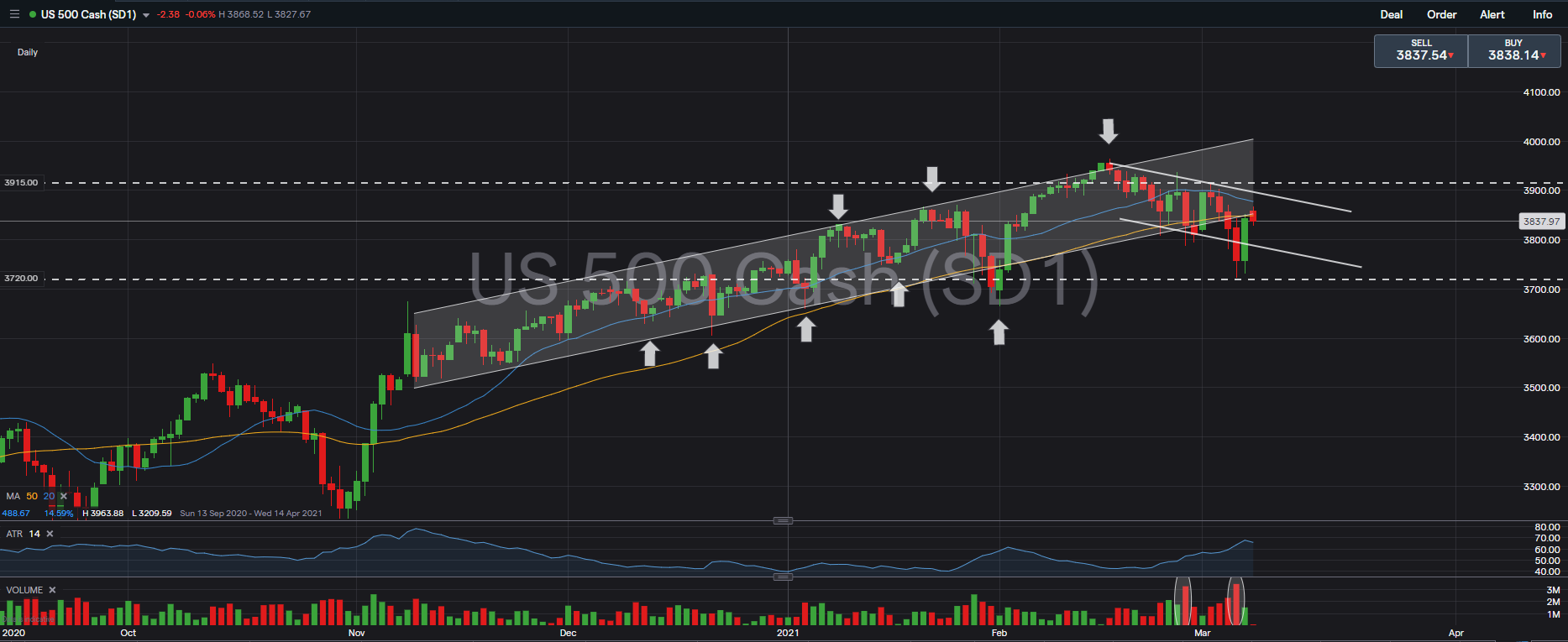President Biden’s $1.9 trillion coronavirus aid bill was passed by the Senate on Saturday and sent back to the House for approval which will take place on Tuesday. Investors will be closely watching the progress of this aid bill through Congress this week against a backdrop of concern over what such a large stimulus package could do to inflation and interest rates. Market participants will also be focusing on U.S. inflation figures with a report on the consumer price index due out on Wednesday and the producer price index scheduled for Friday. In Europe, the European Central Bank will hold its latest policy meeting on Thursday.
Here’s what you need to know to start your week.
S&P500 (US Market)
The benchmark index ($SPX) reversed most of its losses in late Friday to end up +0.83% in a sign some bargain-hunters may have already swooped in after a bumpy week. This comes after $SPX decline over -3.55% in three consecutive session.
At the current development (since last week’s highlight on the structural breakdown of $SPX)
- Price Action remains below 20DMA
- Price Action remains below 50DMA
- Price Action is resisted at lower band of 4 Months uptrend channel
- Further increase of implied volatility since 16th Feburary 2021
- $SPX has a short term establishment of Lower Highs and Lower Lowers for a short term consolidated downtrend channel of 100 points range
At the current junction, $SPX remains bullish at a mid-term higher low. Further signs of weakness in this correction will require $SPX to breach its immediate support level at 3,720.
Immediate resistance for $SPX is currently at 3,915, a breakout of its short term downtrend channel.
Stimulus: a double-edged sword?
The pandemic relief package will give a powerful boost to the economic recovery and to the stock market, but optimism has been offset by fears over rising inflation and interest rates.
Investors have taken the recent run-up in bond yields – which has propelled the benchmark 10-year Treasury yield to levels not seen since before the pandemic – as a sign of potentially damaging inflation expectations.
But U.S. Treasury Secretary Janet Yellen indicated Friday that higher long-term Treasury yields were a sign of expectations for a stronger recovery, not of increased inflation concerns.
U.S. inflation figures
Investors will be closely watching U.S. inflation figures on Wednesday and Friday amid worries over the potential implications of rising price pressures.
Last week Fed Chairman Jerome Powell said that even if prices jump as anticipated this spring, “I expect that we will be patient,” and not change monetary policies that need to remain supportive until the economy is “very far along the road to recovery”.
ECB meeting
Thursday’s ECB meeting is the main event for the euro zone after extended lockdowns in the first quarter. Policymakers will assess the damage to economic growth against a background of a vaccination rollout that is struggling to gain traction, particularly compared with similar efforts in the UK and the U.S.
ECB head Christine Lagarde will also announce the bank’s new quarterly forecasts at the post policy meeting press conference.
Besides the ECB meeting, the euro zone will release figures for January industrial production on Friday, which are expected to contract.



